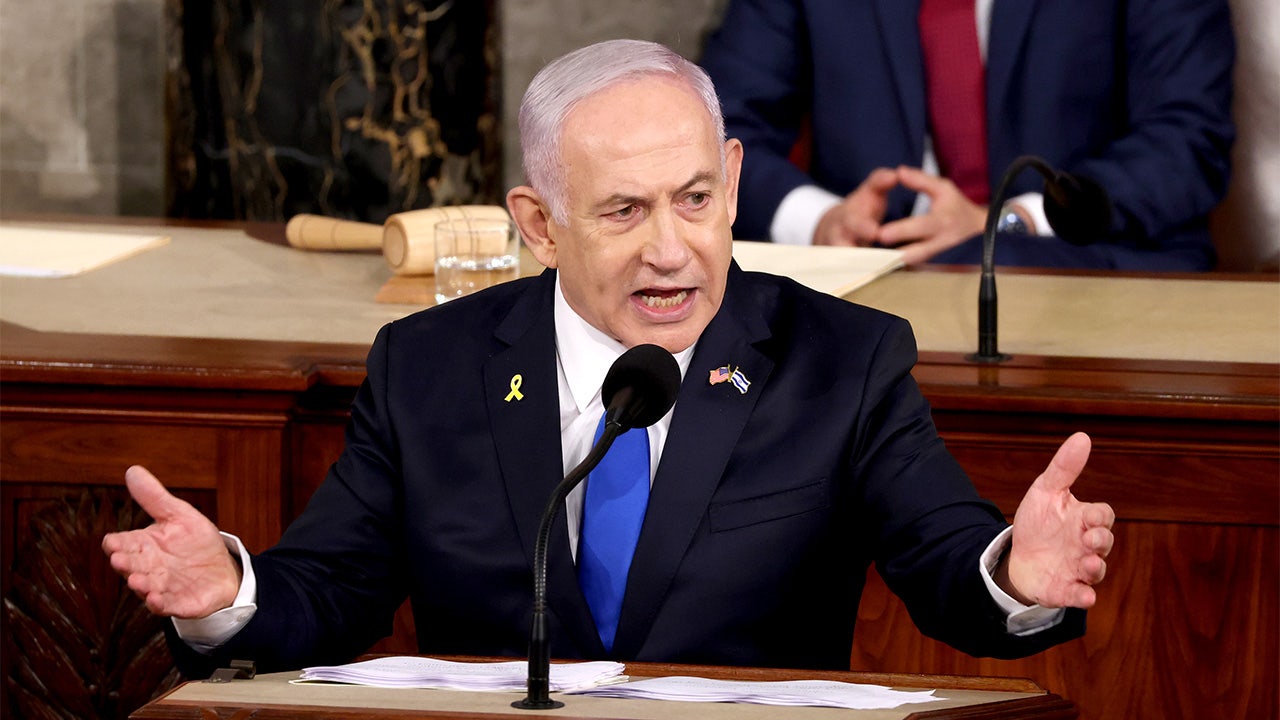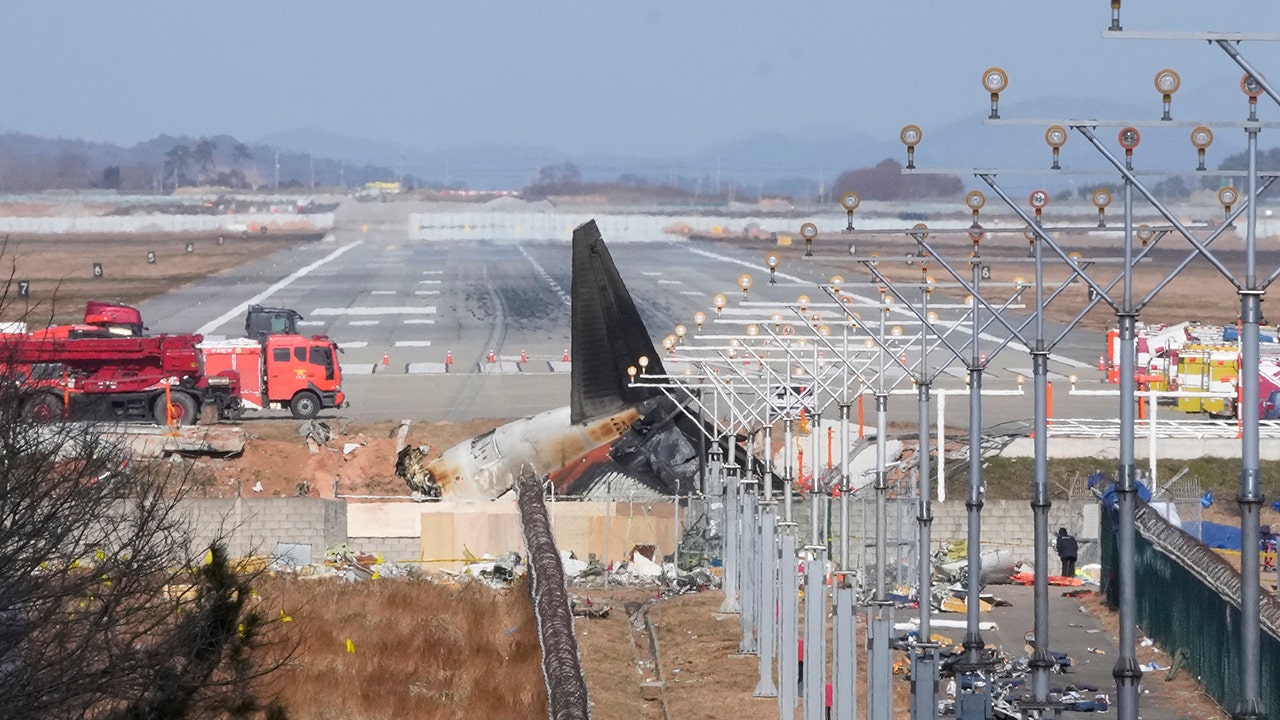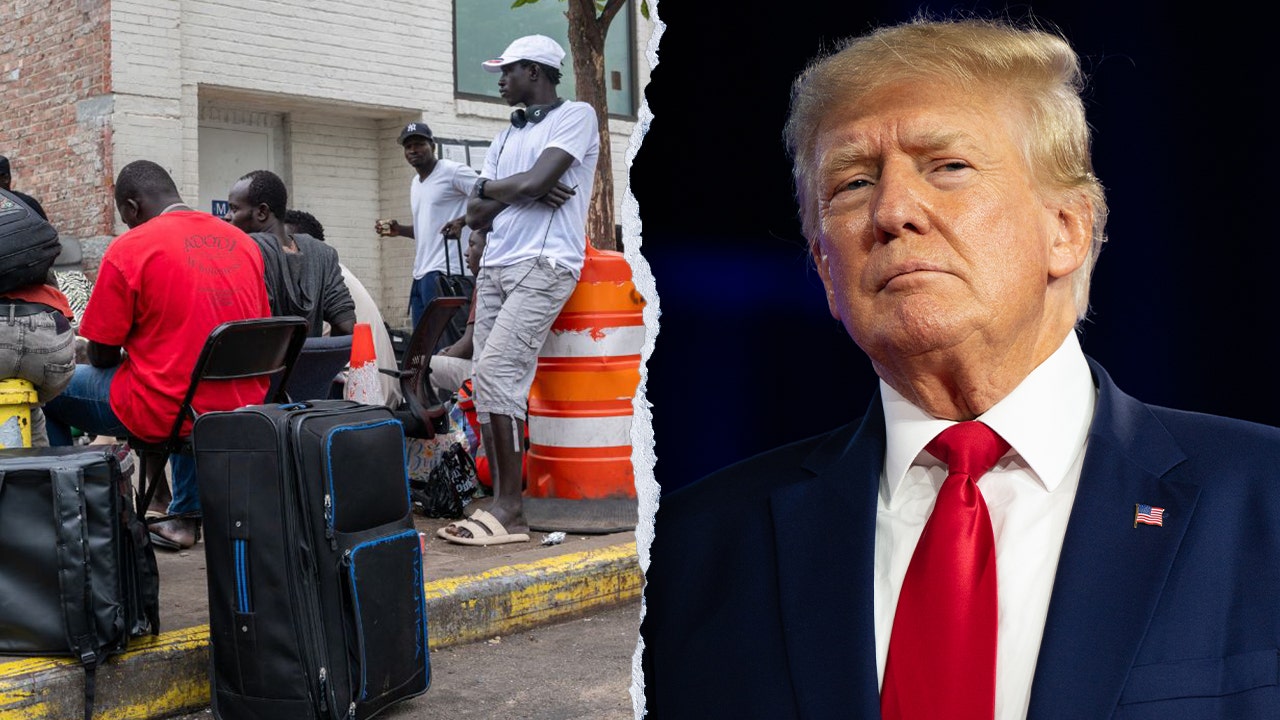World
Israel, Hamas reach deal to release hostages and allow Palestinians to return to Gaza Strip

Israeli Prime Minister Benjamin Netanyahu’s office announced Sunday that an agreement has been reached with Hamas to release additional hostages starting this Thursday, while also allowing Palestinians to return to the northern part of the Gaza Strip beginning Monday morning.
Qatar helped mediate the agreement, which is expected to ease the first major crisis of the fragile ceasefire between Hamas and Israel.
“After firm and determined negotiations led by Prime Minister Netanyahu, Hamas has backed down and will conduct an additional phase of hostage releases this coming Thursday,” Netanyahu’s office said. “As part of this phase, Israeli citizen Arbel Yehud, soldier Agam Berger, and one additional hostage will be released.”
The statement also noted that three additional hostages will be released on Saturday as part of the agreement.
ISRAELI MILITARY CHIEF STEPS DOWN OVER OCTOBER 7 HAMAS MASSACRE: ‘WEIGHS ON ME EVERY DAY’
Prime Minister Benjamin Netanyahu said Israel and Hamas reached an agreement for the release of additional hostages and for Palestinians to return to the northern part of the Gaza Strip. (Getty Images)
Israel confirmed Hamas handed over a list that specified the condition of the hostages expected to be released in the first stage. Local media also reported the list specified the number of living and dead hostages, though names were not included.
Israeli officials claim most of the 26 remaining hostages are alive, which coincides with the list Hamas provided.
Netanyahu’s office also said Israel will allow Palestinians to return to the northern part of the Gaza Strip beginning Monday morning under the agreement with Hamas.
CEASEFIRE DISPUTES BETWEEN ISRAEL AND HAMAS, HEZBOLLAH THROW REGION INTO TURMOIL

Hamas is believed to be holding 26 hostages, as of Sunday. (Reuters/Ibraheem Abu Mustafa/File Photo)
Netanyahu reiterated that Israel will not tolerate any violation of the agreement between the two parties, adding that he will continue to push for the return of all hostages, dead or alive.
Likewise, the White House released a statement on Sunday afternoon saying the arrangement between Israel and Lebanon will be monitored by the U.S. and will remain in effect until Feb. 18, 2025.
“The Government of Lebanon, the Government of Israel, and the Government of the United States will also begin negotiations for the return of Lebanese prisoners captured after October 7, 2023,” the statement read.
HAMAS RELEASES 4 FEMALE HOSTAGES AS PART OF ISRAEL CEASEFIRE

President Donald Trump shakes hands with Israeli Prime Minister Benjamin Netanyahu at Trump’s Mar-a-Lago estate on July 26. (Amos Ben-Gershom (GPO) / Handout/Anadolu via Getty Images)
The agreement between Israel and Hamas comes after the former accused the latter of changing the order of hostages it had planned to release. As a result, Israeli forces blocked thousands of Palestinians from returning to northern Gaza.
Israeli forces also announced Friday that they would not withdraw from southern Lebanon as the ceasefire requires until the Lebanese government fully implements its own responsibilities. According to the agreement, both groups were expected to make withdrawals by Sunday.
“IDF troops operating in southern Lebanon fired warning shots to remove threats in a number of areas where suspects were identified approaching the troops,” the IDF wrote in a statement earlier Sunday.
BITTERSWEET REJOICING AS FIRST HOSTAGES RETURN TO ISRAEL AFTER 471 DAYS IN CAPTIVITY

President Donald Trump met with Israeli Prime Minister Benjamin Netanyahu at his Mar-a-Lago estate back in July. (AP Photo/Alex Brandon)
The disputes came just after President Donald Trump called for Egypt and Jordan to accept refugees from Gaza to “clean out” the region.
“I’d like Egypt to take people,” Trump said. “You’re talking about probably a million and a half people, and we just clean out that whole thing and say, ‘You know, it’s over.’”
Trump said he applauded Jordan for accepting Palestinian refugees but that he told the king: “I’d love for you to take on more, because I’m looking at the whole Gaza Strip right now, and it’s a mess. It’s a real mess.”
Fox News Digital’s Anders Hagstrom contributed to this report.

World
China Vanke's CEO, chairman resign amid growing liquidity worries

World
Airliner's final 4 minutes of recordings are missing after crash that killed 179: investigators

The first report on last month’s Jeju Air crash in South Korea confirmed the plane’s two black boxes stopped recording about four minutes prior to the crash that killed 179 people on board.
The preliminary accident report released by South Korea’s Aviation and Railway Accident Investigation Board on Monday said the flight data and cockpit voice recorders on the Boeing 737-800 had stopped working, confirming what the country’s Transportation Ministry initially said earlier this month.
South Korean officials had sent the devices to the U.S. National Transportation Safety Board for closer examination after discovering that some of the data was missing. It remained unclear why the devices stopped recording.
The report also found traces of bird strikes – feathers and bird blood stains – in both the plane’s engines, though officials have yet to determine what caused the crash.
“The samples were sent to specialized organizations for DNA analysis, and a domestic organization identified them as belonging to Baikal teals,” the report said, referring to a migratory duck.
SOUTH KOREA PLANE’S FINAL MOMENTS CAPTURED ON VIDEO BEFORE HITTING CONCRETE BARRIER, TRIGGERING EXPLOSION
The wreckage of a Boeing 737-800 plane operated by South Korean budget airline Jeju Air lies at Muan International Airport in Muan, South Korea, on Dec. 31, 2024. (AP Photo/Ahn Young-joon, File)
The plane skidded off the runway at Muan International Airport on Dec. 29, 2024, after its landing gear failed to deploy, slamming into a concrete structure and bursting into flames. Only two of the 181 people on board survived.

Experts from the NTSB and joint investigation team between the U.S. and South Korea check the site of a plane crash at Muan International Airport in Muan, South Korea, on Dec. 31, 2024. (Son Hyung-joo/Yonhap via AP, File)
The flight was returning from Bangkok and all the victims were South Koreans except for two Thai nationals.
RUSSIA BEING BLAMED FOR AZERBAIJAN AIRLINES PLANE THAT CRASHED HUNDREDS OF MILES OFF COURSE, KILLING DOZENS
Investigators earlier said that air traffic controllers warned the pilots about possible bird strikes two minutes before the aircraft issued a distress signal confirming that a bird strike had occurred, after which the pilots attempted an emergency landing.
The preliminary report said the pilots also noticed a group of birds while approaching the runway at the Muan airport and that a security camera had filmed the plane coming close to birds during an aborted landing.
The report said authorities will disassemble the engines, examine their components in depth, analyze the black box and air traffic control data, and investigate the embankment, localizer and bird strike evidence to ultimately determine the cause of the crash.
CLICK TO GET THE FOX NEWS APP
Officials said the report has been sent to the International Civil Aviation Organization, Thailand, the U.S. and France, adding that the aircraft was built in the U.S. and its engines in France.
The Associated Press contributed to this report.
World
North Koreans are ‘disciplined’, armed with high-quality ammo, says Ukraine

Despite a push by the United States to end Russia’s full-scale war on Ukraine, Kyiv’s forces appear set for another hurdle almost three years into the conflict.
According to South Korea, North Korea is preparing to send more soldiers to fight alongside Russian forces against Ukraine.
Meanwhile, Ukraine, which has recently captured several North Korean soldiers, says overall, its new enemies are learning on the battlefield, becoming increasingly disciplined.
“With about four months passing since North Korea’s deployment to the Russia-Ukraine war, it is presumed that follow-up measures and preparations for additional deployment are being accelerated due to the occurrence of many casualties and prisoners of war,” South Korea’s Joint Chiefs of Staff said in a statement they made public on Friday.
Ukraine’s military intelligence (GUR) observed on January 2 that new North Korean troops were rotated into combat positions to replace losses.
The GUR estimated North Korea has so far sent about 11,000 soldiers to fight in Russia’s region of Kursk, where Ukraine has staged a counter-invasion to distract Russian troops.
That force was reported to have arrived in Kursk on November 4, and they entered the battle in earnest 10 days later.
Since then, Ukraine says it has inflicted high casualties, but at a slowing rate, as North Koreans learn and adapt.
In their first 40 days in the field, Ukraine said North Koreans suffered 3,000 casualties, or 75 a day, while in the following 20 days they suffered another 1,000 casualties, or 50 a day.
Al Jazeera was unable to independently verify the toll. However, Western officials recently concurred with these Ukrainian figures.
“I think there’s no reason why [North Korea] should not keep sending in battle casualty replacements and not to expand the North Korean force,” said Keir Giles, Russia and Eurasia expert at Chatham House, a UK-based think tank.
“Russia – if all the estimates are to be believed – still badly needs the manpower, and North Korea still plainly values what it’s getting in exchange for this. So why would this force not be just the precursor to a much larger deployment?” he told Al Jazeera.
Grim orders
Moscow has been cagey about the presence of North Korean soldiers, leaving Ukraine and its Western partners as the main sources of information about their alleged military conduct.
In recent weeks, Kyiv has suggested there are grim orders at play – executions and suicides to hide identities and prevent being captured alive.
“After the battles with our guys, the Russians are also trying to … literally burn the faces of the killed North Korean soldiers,” wrote Ukrainian President Volodymyr Zelenskyy on his Telegram channel last month – an apparent effort to conceal their ethnic identity.
In December he wrote, “their own people are executing them.”
Killed North Koreans have been found to be carrying papers falsely identifying them as Russian citizens, Ukraine’s army has said.
Giles suggested Russian pride could be a factor.
“[Russian leaders] don’t want this to become an issue within Russia itself because it undermines the myth that Russia does not need allies, that it is a superpower… that it is perfectly capable of winning wars on its own,” said Giles.
Ukrainian troops and officials also claim that North Koreans have been instructed to kill themselves rather than surrender.
Zelenskyy last week decorated the paratroopers of the 95th Air Assault Brigade who captured the first two North Korean POWs on January 9 and 11.
Previously, wounded North Koreans are understood to have tried to lure their captors into a deathtrap, detonating a grenade as Ukrainians approached.
Ukrainian paratroopers caught a third North Korean POW on Monday, after rebuffing an assault.
In their opinion, he tried to kill himself.
“When the [van that would transport him] drove up, there were concrete pillars under the road, and he accelerated and hit his head on the pillar. He hit it very hard and passed out,” the paratroopers said on January 21.
According to Giles, “the fact that they only have three prisoners… is a good indication that measures are indeed being taken to make sure North Koreans don’t get caught.”
One prisoner, a reconnaissance sniper, said he was told he was on a training mission, according to Kyiv.
North Korea’s benefits
North Korea’s involvement in Ukraine comes with benefits.
While the isolated state has a history of sending mercenaries to wars in Africa and Vietnam for state revenue, it is receiving combat readiness at a level of action not since 1953, when the Korean War ended.
Last October, expert Olena Guseinova, a lecturer at the Hankuk University of Foreign Studies in Seoul, estimated North Korea could realistically send up to 20,000 soldiers to Ukraine based on economic interests, in a research paper for the Friedrich Naumann Foundation.
She estimated the value of weapons North Korea sold to Russia at $5.5bn. North Korean ballistic missiles have reportedly been falling on Ukraine since last September.
“Kim Jong-un could potentially accumulate between $143m and $572m in additional annual revenue if he were to commit between 5,000 and 20,000 personnel to support Russia’s war effort,” Guseinova wrote.
“The overall capacity of the DPRK’s military could hypothetically allow Kim Jong Un to deploy up to 100,000 troops to Ukraine. Realistically, however, the likelihood of such a commitment seems improbable,” she said, because of concerns about exposing North Koreans to outside influences.
The Russian collaboration with North Korea started in the summer of 2023, when South Korean intelligence reported that Pyongyang began to supply Russia with nine million artillery shells.
In addition to a defence pact with Russia, North Korea has been promised ballistic missile technology and assistance in launching satellites.
Russia is believed to be paying for these weapons and services with free oil, sent into North Korea by train.
The big shift in relations came on June 19 last year, when Russian President Vladimir Putin signed a comprehensive strategic partnership agreement with North Korean leader Kim Jong Un, which, he said, included “mutual assistance in the event of aggression”.
In the early weeks of engagement, Ukrainian units posted aerial footage of North Koreans shooting aimlessly at the drones that killed them with grenades.
Seoul’s National Intelligence Service attributed the high casualties to a “lack of understanding of modern warfare”.
In recent days, however, Ukrainian units confessed that their North Korean adversaries were tough and disciplined fighters who spearheaded assaults for Russians.
“They go first. If successful, the Russian troops go to consolidate and take up defence,” said Petro Gaidashchuk of Ukraine’s 80th Air Assault Brigade operating in Kursk.
“The Koreans are more disciplined. They don’t panic so much if they come under fire. If there is one or more wounded in their assault group, they don’t run away,” he told a telethon on January 17. “They try to continue the assault, to pull the wounded away, despite the fact that there is shooting and explosions all around.”
This has created friction among the Russians in whose units they were embedded, he said.
After defeating a North Korean assault on January 18, Ukraine’s 8th Special Operations Regiment in Kursk said the enemy exfiltrated the battlefield “in a coordinated manner”.
Gaidashchuk claimed Russia was lavishing equipment and training on North Koreans that it had denied to its own men.
“The Russians are very dissatisfied with the fact that the North Koreans are better equipped, they are better fed and they are given more time for training, unlike the Russian contract soldiers,” Gaidashchuk said.
Earlier this year, Ukraine’s Special Operations Forces posted excerpts from a notebook they claimed to have found on a North Korean military special forces officer, Gyong Hong Jong, who had been killed in action.
“To be not a battalion that takes on obligations only in words, but a battalion that knows how to act and fight immediately after receiving an order, to prepare universal battalions that can perfectly perform any task even at the cost of death – this is the goal that every battalion in our armed forces must achieve, this is the spirit of this congress,” wrote Jong.
North Korean troops ‘had very high-quality ammunition’: Ukraine
Oleg Chaus, a Ukrainian sergeant with the 17th Heavy Mechanized Brigade in Kursk, said on Christmas Eve that whereas Russian assaults had been “chaotic” and “disorganised”, three units including North Koreans attacked in an organised manner and with air support on December 24.
“All the servicemen of these three groups had very high-quality ammunition. Each of them had disposable grenade launchers, they had night vision devices, they had small assault backpacks with them,” he said.
These reports contrast with descriptions of the foolhardy tasks given to Russian soldiers.
In Toretsk, Ukrainian forces observed a new Russian tactic this month of using soldiers to run ammunition to a forward position, dump it to be picked up by an advancing assault group, and run back.
They called such runners “camels”. Ukrainian soldiers commented that these fighters had a short life expectancy.
“Sometimes a soldier goes on an assault without weapons or protective equipment,” Maksym Belousov, a spokesman for the 60th Mechanised Inhulets Brigade fighting near Lyman town, recently said.
“His task is to be a ‘live target’ to detect our positions. He is followed by a trained fighter who can observe where the shooting is coming from and determine the location of our forces.”
One question for Ukraine’s allies is whether additional North Korean manpower necessitates their stepping in with boots on the ground as well.
French President Emmanuel Macron first raised that prospect almost a year ago. Putin then reacted with a threat of nuclear attacks.
On January 18, German Defence Minister Boris Pistorius said Germany could send a peacekeeping force to secure a demilitarised zone if a ceasefire were agreed between Ukraine and Russia.
“We’re the largest NATO partner in Europe. We’ll obviously have a role to play,” he told Suddeutsche Zeitung.
“No one can pretend this is a conflict confined to one theatre,” said Giles. “It’s global. There’s a destabilising influence in multiple theatres. That strengthens the hand of [the Russian] coalition to challenge the West globally.”
-
/cdn.vox-cdn.com/uploads/chorus_asset/file/25835602/Switch_DonkeyKongCountryReturnsHD_scrn_19.png)
/cdn.vox-cdn.com/uploads/chorus_asset/file/25835602/Switch_DonkeyKongCountryReturnsHD_scrn_19.png) Technology1 week ago
Technology1 week agoNintendo omits original Donkey Kong Country Returns team from the remaster’s credits
-

 Culture1 week ago
Culture1 week agoAmerican men can’t win Olympic cross-country skiing medals — or can they?
-

 Culture7 days ago
Culture7 days agoBook Review: ‘Somewhere Toward Freedom,’ by Bennett Parten
-

 World1 week ago
World1 week agoChrystia Freeland, Justin Trudeau’s ‘Minister of Everything,’ Enters Race to Replace Him
-

 Education1 week ago
Education1 week agoReport Projecting Drop in Freshman Enrollment Delivered Incorrect Findings
-

 News1 week ago
News1 week agoCNN liable for defamation over story on Afghanistan 'black market' rescues
-

 World1 week ago
World1 week ago‘Fields were solitary’: Migration raids send chill across rural California
-

 World1 week ago
World1 week agoCommission claims slashing of foreign offices still under negotiation














